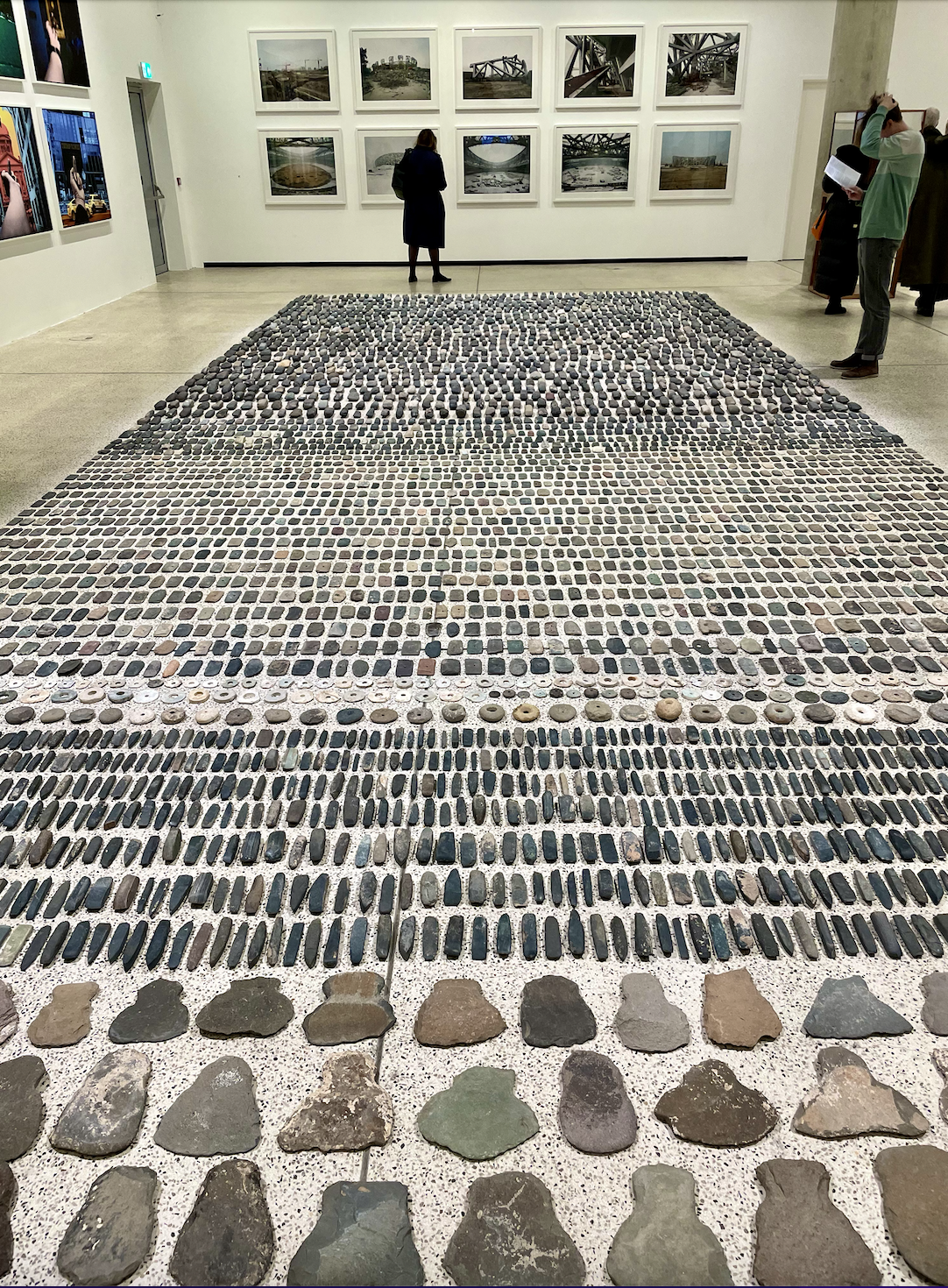Making Sense - Ai Weiwei at the Design Museum
Searching for a way to make sense of the world underpins all the work of artist, filmmaker, architect, activist, collector and inveterate disruptor, Ai Weiwei.
Artist, filmmaker, architect, activist, collector and inveterate disruptor, Ai Weiwei
In his typically dramatic and thought-provoking new exhibition at the Design Museum, Ai turns his attention to design and our attitudes to objects - what we keep and what we discard and what that reveals about our changing values through time, the way old skills and values are mindlessly swept aside in the relentless appetite for progress, and how what was once precious becomes worthless.
In the huge open space of the exhibition gallery, the impact of the displays and installations, which are carefully laid out on the walls and floor is immediate. But it is on closer examination that the anger and sadness that pervades each one becomes more and more apparent. And more and more moving.
The huge open space that houses the displays in Making Sense
Across the floor are five large rectangular ‘fields’ of objects, three of which bear testament to Ai’s prodigious collecting, sorting and storing of objects from China’s past. Having spent 12 years in America, he was shocked when he returned to China in 1993 not just at the changes that had taken place, but at the lack of interest in, or respect for, what had come before.
Determined to salvage what he could from his country’s history, he started searching flea markets buying discarded items for next to nothing and, in the process, amassing a treasure trove collection of relics. Like the 4,000 late Stone Age axe-heads, chisels, knives and spinning wheels, carefully displayed here, side by side in precise rows. They remind us of the ingenuity of our ancestors but also how objects that were of such fundamental importance in the lives of previous generations can become so meaningless to future ones.
Stone Age tools laid out in precise rows
In another, precisely equal sized ‘field’, a mind-boggling 250,000 porcelain sprouts from teapots and wine ewers, rejected when they were made for being in some way imperfect, are piled on top of each other. The sheer volume of items speaks to the scale of porcelain production in China even 1000 years ago, but Ai also sees the discarded sprouts as representative of the Chinese authority’s continual clampdown on freedom of speech, with the spouts - or mouths, and therefore voices - of people being callously removed.
Ai collected 250,000 porcelain sprouts from teapots and wine ewers
In a third ‘field’ of collected artefacts, a bemusing collection of assorted size small balls are laid out in a tightly packed grid. When Ai first started coming across these, it turns out high quality porcelain, balls he had no idea what they were. It turned out that they are cannonballs, made during the Song dynasty (960-1279). Like him, we can’t help but be amazed that so many objects can be so precisely identical when each one was made by hand, or that something constructed from such a seemingly delicate material could be used as a weapon of war.
Some of the 200,000 hand-made porcelain cannonballs
The other two ‘fields’ speak to Ai’s more personal, recent experience. The rectangle consisting of jagged chunks of blue-glazed porcelain, are revealed to be the remains of his own sculptures which were destroyed when his ‘Left Right’ studio in Beijing was demolished by the Chinese state in 2018. It’s a chilling reminder of the persecution he has suffered at the hands of the authorities (he was once held in solitary confinement for 81 days, and only released after huge international pressure), and a testament to the way he uses even such devastating personal experience to create art.
The jagged fragments of Ai’s porcelain sculptures that were destroyed when his studio was demolished by the Chinese state.
Then there’s the enormous collection of Lego pieces, a material Ai started working with in 2014 to produce portraits of political prisoners. When Lego stopped selling to him as a result, he posted about the ban on social media and was quickly inundated by donations from the public.
Lego bricks laid out around the reconstructed remains of Qing dynasty temple columns and tables
In a reflection of the porcelain shards from his destroyed studio, the colourful Lego collection is displayed around the reconfigured columns of a Qing dynasty (1644-1911) temple interlaced with tables from the same period, as another example of how destruction can be reconfigured into something new and positive.
By way of demonstration of his skill with this most prosaic of materials, one wall of the gallery space is dominated by arguably the most impactful piece in the collection. A vast recreation of Water Lilies, one of the most famous paintings by Claude Monet, made up entirely of the smallest of all the Lego bricks. Of course, being an Ai interpretation, there is a darker side, represented by the sinister, darkened doorway to one side of the piece. This represents the door to the underground dugout where Ai and his father lived in forced exile in the 1960s.
The sinister dark doorway in Ai’s Lego interpretation of Claude Monet’s Lillies
The enormous piece from the other end
And a close up of the tiny individual Lego bricks used to construct it
Two other large installations literally snake their way along the long wall of the gallery. On closer inspection, the pair of undulating serpents reveal themselves to be made out of items salvaged from man-made and natural disasters. One is constructed from the regulation grey and black rucksacks used by some of the 5,197 school children who were killed when their sub-standard schools collapsed in the Sichuan earthquake of 2008. Whilst the other is made from the blue and red life jackets left behind on the beaches of Lesbos by boat loads of Syrian refugees.
Backpack Snake, made from the rucksacks of children killed in the Sichuan earthquake of 2008
Life Vest Snake, constructed using abandoned life jackets from Syrian refugees
Other smaller individual pieces, dotted around the space and in cabinets reflect the way everyday objects can be changed from something useful but worthless, into something worthless but valuable (a marble toilet roll, a mobile phone made out of jade, a builder’s hard hat cast in glass). Whilst round the walls are canvases and videos reflecting the relentlessly rapid pace of urban expansion in China and what has been lost in to make way for new development in the restless march for change.
Making Sense is an exhibition that can be taken in, in little more than a glance, but which only reveals its powerful emotional depth and impact on closer, considered inspection. If you have the chance to experience it for yourself between now and July 30th, when it closes, I really recommend you do.
Information about opening times and ticket prices for Making Sense are HERE
Other posts you’ll enjoy:
An exhibition by the UK’s greatest living sculptor
















